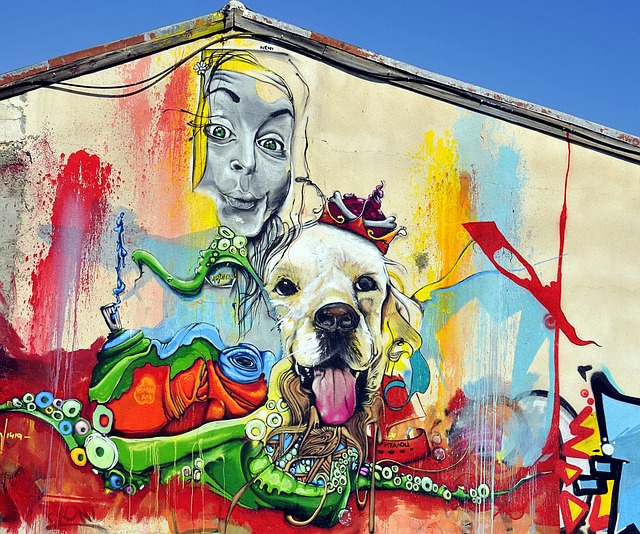A mural is a painting or drawing that is painted or created directly on the walls and ceilings of a building or on a permanent surface.Old age murals can be found in multiple cave paintings and on various buildings. Modern day murals can be seen in public spaces such as streets, parks and various walls across the city. Artwork done in public places also goes by street art. The word mural is derived from the Latin word ‘murus’ which means wall.
The history of murals dates back to cave paintings dating back to 40,000 – 5000 BC. Ancient civilizations like Egyptian tombs and Mayan pyramids show a rich indulgence in murals.. In modern times, murals have evolved to incorporate a wide range of styles and themes, from political and social commentary to abstract and surrealistic designs.
One of the defining characteristics of murals is their size. Unlike smaller works of art, murals have the ability to command attention and create a sense of awe in viewers. They are also often created in public spaces, making them accessible to a wide audience and allowing them to reach a larger impact.
Another unique aspect of murals is their community-driven nature. Many murals are commissioned or created by artists and community organizations, with the goal of bringing color and beauty to a neighborhood, while also reflecting the values and experiences of the people who live there. Murals are a great way to propagate the messages around social awareness.
In recent years, murals have also become a powerful tool for activism and social justice movements. From the Mexican muralists of the early 20th century to contemporary street artists, murals have been used to spread messages of hope, equality, and resistance.
While murals can be found all over the world, some cities are particularly known for their vibrant mural scenes. Philadelphia, for example, has over 3,000 murals, making it the “mural capital of the world.” Other cities with thriving mural scenes include San Francisco, Los Angeles, and Mexico City.
Murals have been a part of Indian art and culture for centuries. They can be found in a variety of historic and religious sites, including temples, palaces, and caves. The earliest murals in India date back to the 3rd century BC and are found in the natural and rock-cut caves. Notable examples are Ajanta Cave (Maharashtra), Armamalia Cave (Tamil Nadu), Ravan Chhaya Rock Shelter (Odisha), Bagh Caves (Madhya Pradesh), Tirumalaipuram Caves and Chithannavasal Cave (Tamil Nadu), Badami Cave Temple (Karnataka) and Kailasanatha temple in Ellora Caves (Maharashtra).
Indian murals are known for their intricate and detailed style, often featuring vibrant colors, elaborate patterns, and religious or mythological themes. In Hindu temples, for example, murals depict scenes from Hindu mythology and the life of Hindu gods and goddesses. In palaces and royal residences, murals often feature portraits of rulers and court scenes.
In recent years, murals have gained new popularity in India, particularly in urban areas. Street artists and community groups are using murals to add color and beauty to drab city walls, while also making powerful social and political statements.
One of the most famous examples of contemporary mural art in India is the Hussain-DawaKhana wall in Hyderabad. This vibrant and eye-catching mural was created by a group of artists and has become a popular tourist destination and symbol of the city’s vibrant cultural scene.
In addition to its rich tradition of mural art, India is also home to a thriving street art scene. From politically charged works to whimsical and imaginative pieces, street art in India is a vibrant and ever-evolving expression of the country’s creative spirit.
In conclusion, murals are an important and impactful form of public art. They bring color and life to urban spaces, reflect the experiences and values of communities, and serve as powerful tools for activism and social change. Whether you are a fan of traditional or contemporary styles, there is a mural out there that is sure to captivate and inspire you.
Image courtsey: https://pixabay.com/photos/mural-graffiti-street-art-painting-508268/





